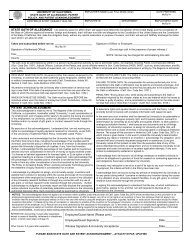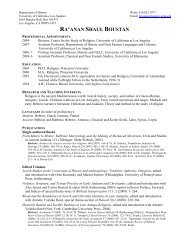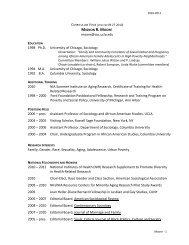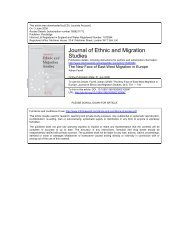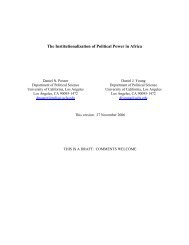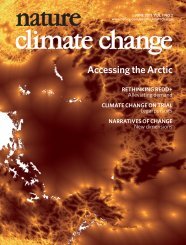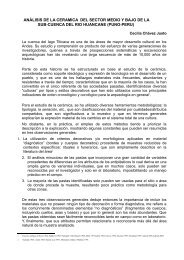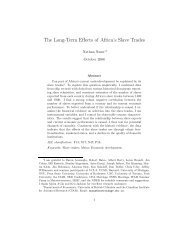433 Chapter Seven Cosmos For the Matsigenka of Shimaa, kameti ...
433 Chapter Seven Cosmos For the Matsigenka of Shimaa, kameti ...
433 Chapter Seven Cosmos For the Matsigenka of Shimaa, kameti ...
You also want an ePaper? Increase the reach of your titles
YUMPU automatically turns print PDFs into web optimized ePapers that Google loves.
This system <strong>of</strong> classification conveys useful information about resource zones. <strong>For</strong><br />
example, some birds walk on <strong>the</strong> forest floor (saaviku), meaning <strong>the</strong>y can be caught in certain<br />
kinds <strong>of</strong> traps, whereas o<strong>the</strong>rs live among <strong>the</strong> branches (enoku “up” or oshiku “in <strong>the</strong> leaves”),<br />
requiring different traps. As Werner Wilbert has pointed out, such a classificatory system<br />
groups animals according to <strong>the</strong> spaces <strong>the</strong>y occupy, a kind <strong>of</strong> de facto recognition <strong>of</strong> plant and<br />
animal associations (W. Wilbert 1992: 71; 1995). As Wilbert interprets this aspect <strong>of</strong><br />
cosmology, it is not <strong>the</strong> descent <strong>of</strong> species that matters, but <strong>the</strong>ir “balanced complementary<br />
diversity” within <strong>the</strong> natural (and spiritual) world. Such a classification groups biotic<br />
communities ra<strong>the</strong>r than a Linnean tree <strong>of</strong> genetic relatives.<br />
In conversation Machiguengas explore details that generate cross-cutting classifications.<br />
Different monkeys prefer different fruits, seeds or leaves, traces <strong>of</strong> <strong>the</strong>ir aboreal feeding littering<br />
<strong>the</strong> ground below. Some fish can be caught with fishhooks, o<strong>the</strong>rs cannot. Some animals are<br />
dangerous (koveenkaripage) or eat people (sekatantacharira). <strong>Matsigenka</strong>s know all sorts <strong>of</strong><br />
behavioral details about <strong>the</strong> animals around <strong>the</strong>m, and any <strong>of</strong> <strong>the</strong>se details is liable to be used in<br />
describing any particular one. Shepard (1995b) explores many forms <strong>of</strong> noun classification that<br />
also result in partial or cross-cutting typologies <strong>of</strong> animal life.<br />
Some patterns <strong>of</strong> classification, however, do come up frequently in conversation. In<br />
<strong>Matsigenka</strong>, one does not ask directly, “What kind <strong>of</strong> x is y?” (e.g., “what kind <strong>of</strong> bird is a<br />
dove?”). Two o<strong>the</strong>r questions have to serve instead: first, tiara ipaita “What is it called?” and<br />
second, “Is x a y?” (e.g., shiromega inti kanari “Is dove a ‘guan’?”). The “What is it called?”<br />
frame usually elicits <strong>the</strong> specific name <strong>of</strong> an animal. But sometimes I found that it was eliciting<br />
cover terms, which are more common for animals than <strong>the</strong>y are for plants. A few <strong>of</strong> <strong>the</strong>m have<br />
450




